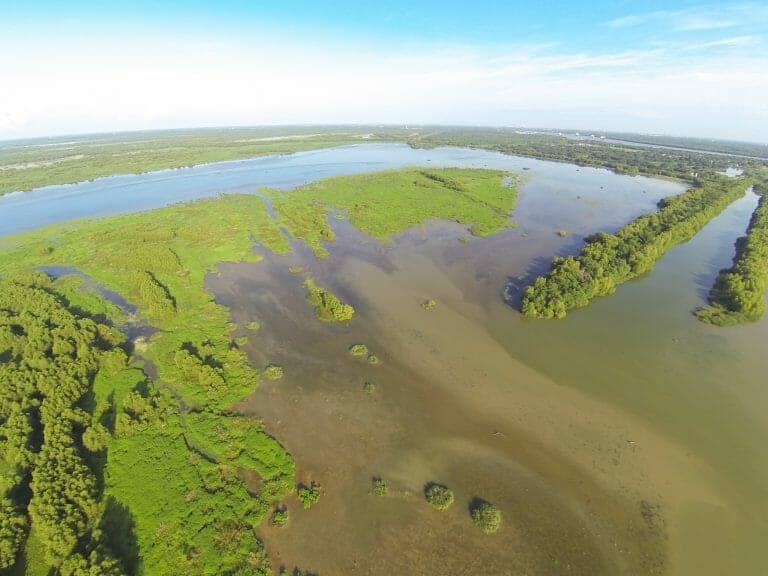Aerial picture of the Caernarvon Freshwater Diversion outfall canal (on the right) and the delta built by the diversion in Big Mar Pond. The photo was taken on July 17, 2014. Note the lush, green vegetation on the newly built delta includes wetland grasses and black willow trees. All of these plants colonized on their own, once the diversion built the land.
Within the scientific community, and among the general public, there is controversy over the effects that nutrients, introduced through sediment diversions, will have on wetland vegetation. The speculation is that increased nutrients, especially nitrate, will result in decreased root growth.
With increased nutrient availability, plant roots will no longer have to “search” for nutrients, resulting in decreased growth. This results in fewer roots to hold and trap soil and organic matter, creating weaker wetlands.
In addition, the increase in nutrients could benefit the bacteria that decompose organic matter, decreasing organic matter storage in marshes; and, therefore, decreasing elevation and soil strength. Alternately, increased nutrients could also result in increased root, shoot and leaf growth. This increases organic matter (dead or decaying plant material) added to the marsh as plants die or go into winter senescence. […]
Full article: Will Diversions Introduce Nutrients That Harm Wetland Vegetation?
More about plants and plant roots:
Plant roots go to extreme lengths to find water

